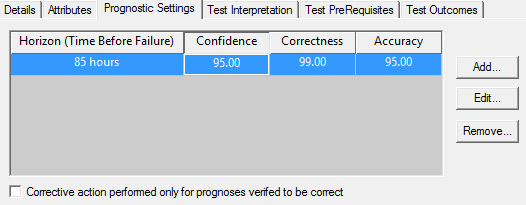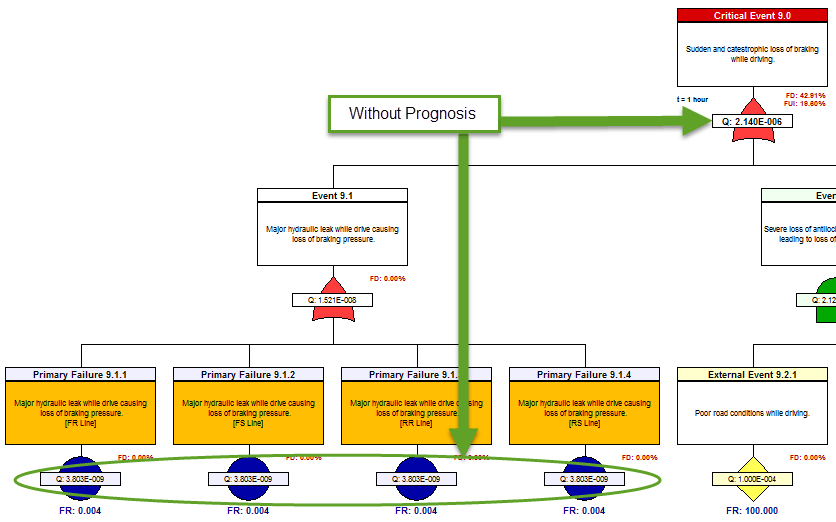

Products
Accounting for Prognostics in the Fault Tree Analysis
When a prognosis is modeled in eXpress it will include a confidence, correctness and a setting to determine whether the prognosis will always lead to a corrective action or only lead to a corrective action when the prognosis has been verified to be correct. The accuracy of the prognosis is the likelihood of the corrective action occurring based upon the confidence that the fault will be prognosed prior to failure. When verification of the prognosis is required, the accuracy equals the confidence multiplied by the correctness that the prognosed fault will actually occur.

Prognostic Test Settings in eXpress
Prognostic Test Settings in eXpress
Since the corrective action for prognosed failures occur before a failure occurs, the corrective action mitigates the critical event on the FTA by reducing the likelihood of the critical event occurring. When an eXpress diagnostic that includes a prognosis of one of the root failures of the critical events in the FTA is set as the design document used to generate the FTA, then the likelihood of the critical event will be reduced by the accuracy of the prognosis on the root failure within the period of performance of the FTA.
In the example shown, the orange indicates a failure which is not-detectable by any means and the white in the transition slide represent failures which are detectable using a prognostic test. The likelihood of occurrence for both the root failures and the critical event is reduced by the confidence that the prognosis will actually occur which in this case is 80%.

Prognostics in the FTA


